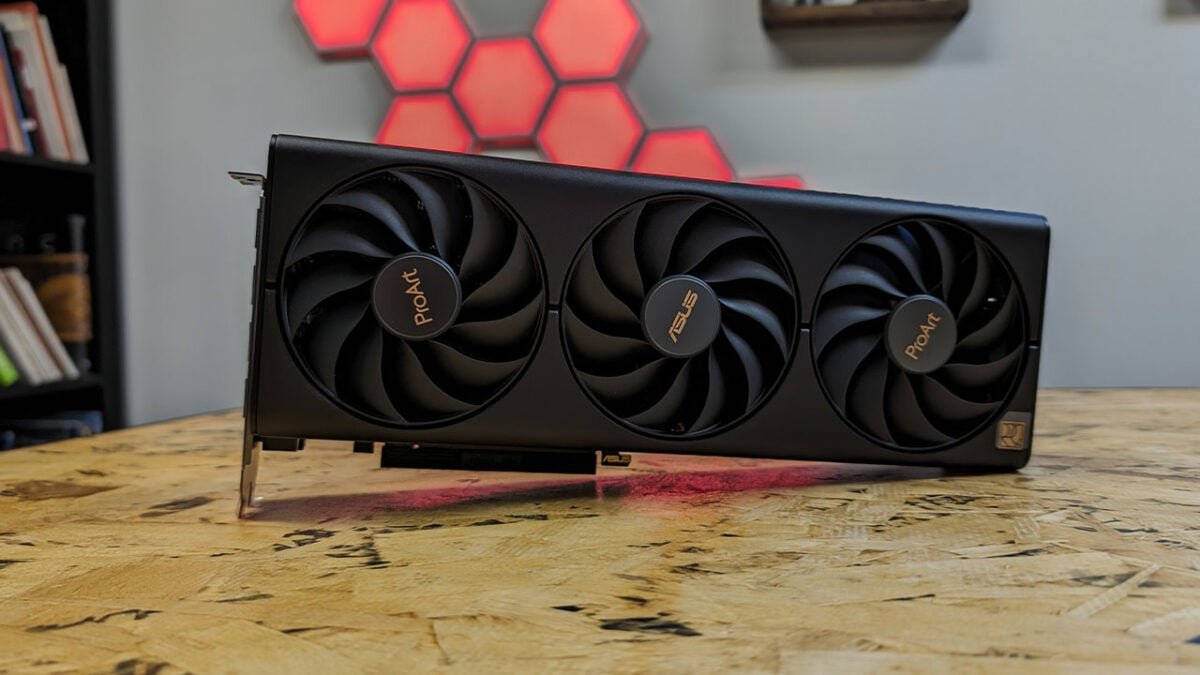NVIDIA’s GeForce RTX 40 series graphics cards have made quite a splash since their launch last fall, delivering exceptional performance powered by the company’s new Ada Lovelace architecture. While the flagship RTX 4090 and 4080 models grabbed most of the headlines, NVIDIA also released the more mainstream RTX 4060 Ti in two memory configurations: 8GB and a new 16GB variant. I’ve had the chance to thoroughly test out the 16GB model, which packs the same GPU as the 8GB but with double the video memory, and this mixes things up more than you may expect.
This increased VRAM capacity provides some meaningful benefits in certain games and workloads, though there are tradeoffs to consider with the card’s narrower 128-bit memory bus. At an MSRP of $499, the RTX 4060 Ti 16GB costs $100 more than the 8GB version. So, with this in mind, I’ll be taking a close look at the performance and value proposition of this unique middle child in NVIDIA’s Ada Lovelace lineup. Does the extra video memory justify the higher price tag compared to alternatives like the Radeon RX 6700 XT?

The GeForce RTX 4060 Ti 16GB retains the same AD106 GPU and core specifications as the 8GB model, including 4,352 CUDA cores, 34 RT cores for ray tracing, and 136 Tensor cores for AI. The key difference lies in the memory configuration. While both cards use 16Gbps GDDR6 memory, the 16GB variant doubles the capacity to 16GB across a 128-bit bus. For games that need this extra memory, it is useful, but there are still limitations and bottlenecks that the RX 4060 design runs into.
This expanded framebuffer can help performance in games that use higher-resolution textures or have memory-hungry graphics settings enabled. However, the narrow 128-bit bus does bottleneck memory bandwidth in certain workloads compared to 192-bit or 256-bit interfaces on higher-end GPUs, so it is not as cut and dry as you may believe.
| RTX 4080 16GB | RTX 4070 Ti 12GB | RTX 4070 12GB | RTX 4060 TI 8GB | RTX 4060 TI 16GB | |
|---|---|---|---|---|---|
| Processor | AD103 | AD104 | AD104 | AD106 | AD106 |
| Transistors | 45.9B | 35.8B | 35.6B | 22.9 billion | 22.9 billion |
| Die Size | 379mm² | 295mm² | 295mm² | 187.8mm² | 187.8mm² |
| CUDA Cores | 9728 | 7680 | 5888 | 4352 | 4352 |
| Boost Clock | 2.51GHz | 2.61GHz | 2.475GHz | 2670MHz | 2670MHz |
| Memory Interface | 256-bit | 192-bit | 192-bit | 128 bit | 128 bit |
| Memory Bandwidth | 742GB/s | 557GB/s | 504GB/s | 288.0 GB/s | 288.0 GB/s |
| TGP | 320W | 285W | 200W | 115W | 160W |
| PSU Recommendation | 750W | 700W | 650W | 500W | 500W |
| PSU Cables | 3x 8-pin | 2x 8-pin | 2x 8-pin | 2x 8-pin | 2x 8-pin |
| Base Price | $1199 | $799 | $599 | $399 | $499 |
| Release date | November 16th, 2022 | January 5th, 2023 | April 13th, 2023 | May 2023 | Jul 2023 |
Physically, the RTX 4060 Ti 16GB looks identical to the 8GB version, with a compact triple fan design and sleek overall form factor. The model we are looking at requires a single 8-pin PCIe power connector, and NVIDIA has raised the default power limit on the Ti model to 160 watts to account for the increased performance the card allows.
I am a fan of how the ASUS ProArt GPU looks and feels; the understated, clean look works well, especially for someone building a workstation or creator-oriented PC. The simple black and gold colour scheme stands out in a sea of RGB and bold-looking cards, and that is a good thing. It exudes a style that I don’t expect from today’s GPU lines.
“The simple black and gold colour scheme stands out in a sea of RGB and bold-looking cards, and that is a good thing. It exudes a style that I don’t expect from today’s GPU lines.”
In terms of I/O, the ASUS ProArt GeForce RTX 4060 has what you would expect from an Ada Lovelace-based card. You get one HDMI 2.1 port and three DisplayPort 1.4a connectors for display output. As with all 40-series cards, there is no support for DisplayPort 2.0, which can drive higher refresh rates at 4K. This is a bit disappointing but understandable, especially since it is simply not supported on this generation of cards, but considering AMD added it to their RX 7000 series, I am sad to see it missing, especially with more high frame rate monitors hitting the market.
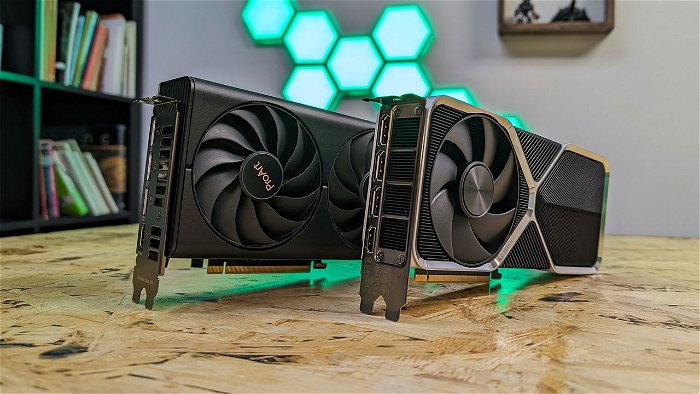
Looking at the cooler on the RTX 4060 Ti 16GB, it is very similar to what ASUS put on the 8GB version of the card, and that makes sense. The triple fan design is a solid choice for keeping a card of this performance level cool, and even though the VRAM on the back of the board may warm the card up a bit, it should have no trouble compensating for the extra heat without being overly noisy.
The 160W TDP is easy enough to cool for most RTX 4060 Ti 16GB models. The card isn’t power-hungry, and overclocking headroom exists for those wanting to push things further. Acoustics are pleasant out of the box, and the fans generally don’t need to ramp up much during gaming. Thermals look very manageable, and even with the increase in VRAM, there should be plenty of ability to push the card a bit harder should you want to tinker with things

Now that we have that out of the way, it is finally time to slot the GPU into our test bench and see how it fairs with a range of gaming and work tasks. Our test bench we will be using for all benchmarks features a 14th gen Intel i9-14900K, an MSI 850W PSU, a whopping 64GB of SK Hynix DDR5 RAM, and a blazing fast PCIe Gen 4 2TB Kingston Fury M.2 SSD. We have this similar build for most of our tests, ensuring we will not hit any major bottlenecks that could prevent the GPU from performing at its best.
When it comes to gaming, the RTX 4060 Ti 16GB delivers solid performance at 1080p, with most modern titles easily surpassing 60fps, even with maxed-out settings. Compared to the 8GB model, the extra VRAM provides a nice boost to average and minimum framerates, reducing stuttering in games that can exceed 8GB VRAM usage at 1080p, like Total War: Warhammer 3.
| 1880P Benchmarks | RTX 3060 | RTX 4070 | RTX 4060 TI | RTX 4060 TI 16GB |
|---|---|---|---|---|
| Metro Exodus | 84.9 | 155 | 100.3 | 100.1 |
| Cyberpunk 2077 | 95 | 189 | 103 | 106.1 |
| The Witcher 3 | 156.2 | 234 | 180.1 | 182.1 |
| Total War: Warhammer 3 | 93 | 137 | 103 | 108.6 |
| Red Dead Redemption 2 | 79.8 | 115.9 | 89.2 | 90.1 |
| Forza Horizon 5 | 106 | 153 | 130 | 130 |
| Resident Evil 4 | 103 | 175 | 133 | 139 |
Throughout our testing at 1080P, the gains over the 8GB variant were minimal, with only a few games like Resident Evil 4 showing any significant increase in frames. This shows the value of increased memory capacity in certain games, although the narrower 128-bit bus can still limit overall bandwidth, and with only a few games taking advantage of this, for most people, the increase will be minimal at best.
At 1440p, the 16GB of VRAM helps maintain smoother performance compared to the 8GB model. However, average frame rates are still well below 140 fps, even on older titles, meaning that high-refresh 1440p gaming isn’t ideal for the RTX 4060 Ti. This is not unexpected, as even the RTX 4070 struggled with high-refresh AAA games at 1440p, but it is good to see that the RTX 4060 16GB delivers a slightly more consistent performance compared to the 8GB variant.
The card is playable at this resolution, but you’ll have to turn down some settings to get a consistent 60+ fps experience in demanding games. The real advantage is the stability of the frames, with fewer major drops when playing different titles but no major performance gains compared to alternative cards like the 4070.
| 1440P Benchmarks | RTX 3060 | RTX 4070 | RTX 4060 TI | RTX 4060 TI 16GB |
|---|---|---|---|---|
| Metro Exodus | 66.3 | 127 | 78.9 | 78.6 |
| Cyberpunk 2077 | 61 | 124 | 63.55 | 66.5 |
| The Witcher 3 | 118.9 | 173.8 | 130.2 | 131.1 |
| Total War: Warhammer 3 | 61.2 | 88 | 65 | 66.1 |
| Red Dead Redemption 2 | 65.1 | 93.2 | 68.9 | 69.3 |
| Forza Horizon 5 | 73 | 130 | 104 | 107 |
| Resident Evil 4 | 81 | 122 | 92 | 94 |
Jump to what the RTX is known for, ray tracing, and you see the limits of what the increased VRAM can actually do. Enabling ray tracing and DLSS 3 can help boost frame rates, but the 4060 Ti isn’t powerful enough to run maxed-out ray tracing settings smoothly. You’ll need to find the right balance of ray-tracing effects for acceptable performance. DLSS 3’s frame generation helps, but it’s no magic bullet for ideal ray-tracing gameplay on this GPU. This is not to say that it will be unplayable; it will just not be as dramatic an improvement over the 4070 and above, simply due to the limitations of the 4060 specs, even with the doubled VRAM.
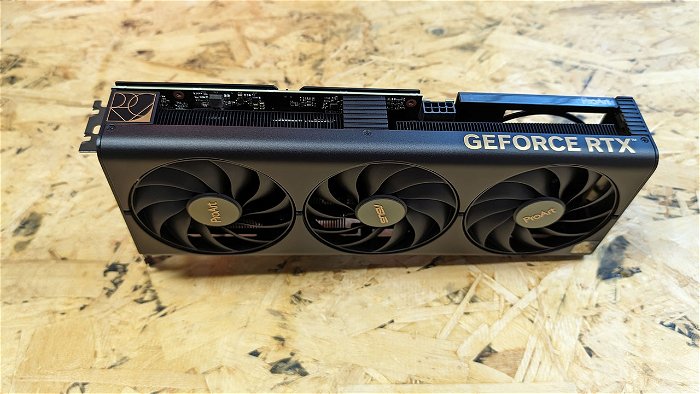
Despite the limitations detailed above, when jumping over to creative workflows, the RTX 4060 16GB has proven itself to be a great choice for creators on a budget. It not only manages multi-threaded applications such as Blender, 3ds Max, and Cinema 4D, it does so in a way that leads to faster project completion and more efficient workflows thanks to its featureset and increased VRAM compared to 8GB variants. Like many of the higher-end models in the 40-series range, the RTX 4060 16GB allows for real-time rendering of detailed 3D models and complex scenes, allowing artists to iterate faster and achieve polished results.
“…when jumping over to creative workflows, the RTX 4060 16GB has proven itself as a great choice for creators on a budget.”
In video editing and visual effects software like Adobe Premiere Pro, After Effects, and DaVinci Resolve, the RTX 4060 16GB handles demanding workloads, speeding up timeline previews, real-time playback, and effects rendering, giving professionals more time to perfect their projects. Additionally, it offers impressive performance for photographers and graphic designers, providing support for CUDA-accelerated features in programs like Adobe Photoshop and Lightroom, resulting in more responsive brush strokes, faster filter applications, and near-instant file exports. The RTX 4060’s efficiency and performance make it a valuable tool for a wide range of creative workloads.

Like the rest of the RTX 40-series, the RTX 4060 offers support for AV1 encoding, providing a more efficient encoding experience that is essential for today’s content creators. This allows video to be encoded at lower bit rates while maintaining the same quality as previous options, resulting in smaller file sizes and faster upload times.
In our tests, the average time to render a frame in AV1 was 1.4 ms compared to 2.4 ms in H.264, demonstrating the efficiency of the RTX 4060 in content creation. For content creators holding onto the 30-series, AV1 is a big reason to make the leap. Even in the lower-end cards, the increase in speed and efficiency makes it an amazing tool in your arsenal moving forward and something that can give you a leg up, especially in streaming.
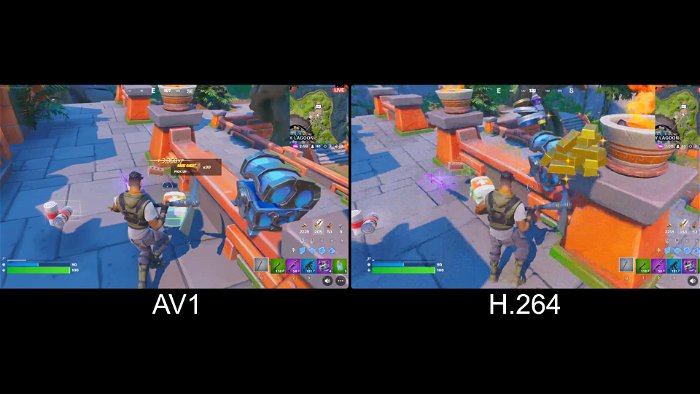
With all that out of the way, is the RTX 4060 16GB worth the $100 compared to the 8GB variant? That is a slightly harder question to answer than you may think. The value of extra VRAM depends on the target resolution or workflow. At 1080p, even demanding games rarely exceed 8GB usage currently. The 16GB framebuffer offers more future-proofing headroom as assets and textures continue increasing in size. It’s overkill for most 1080p gaming today, but there may be some value at 1440P or beyond, especially if you want to increase texture quality or push forward with ray tracing.
Ultimately, the merits of capacity versus bandwidth depend on the workload. The 16GB RTX 4060 Ti helps in some games but remains constrained in others. A 12GB or 16GB card with a 192-bit bus may have provided a better overall balance. Still, if you specifically need 16GB VRAM for development work or future proofing, the 4060 Ti 16GB delivers that. Just don’t expect magical gaming performance gains over the 8GB model.
With an MSRP of $499, the RTX 4060 Ti 16GB costs 25% more than the $399 8GB model while offering, at best, a marginal increase in gaming performance. This makes it a questionable value proposition, especially considering the narrower memory bus. That said if you have any of the workflows described above or are firmly committed to tackling 1440P gaming or more creative workflows where VRAM is essential, that $100 could be money well spent.
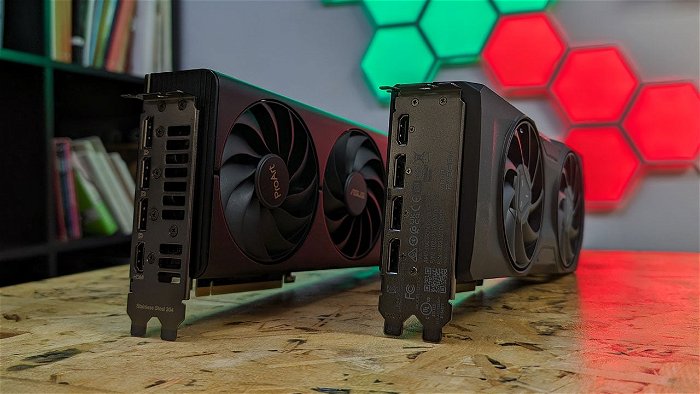
Compared to AMD cards in the same price segment, like the $399 Radeon RX 6700 XT, the RTX 4060 Ti 16GB trades blows in traditional rasterization and falls behind in ray tracing. It also lags behind the $499 RX 6800 in both performance and VRAM capacity.
The RTX 4060 Ti 16GB does beat out previous-gen cards like the RTX 3060 Ti and 3070 in raw power. But last-gen options can often be found at significant discounts, making them better value. Even the RTX 3080 12GB occasionally drops to $699 despite offering more CUDA cores and a wider memory bus than the 4060 Ti, but that all depends on availability and if you need some of the features the 40-series offers, like AV1 encoding.
“Ultimately, it feels like the ASUS ProArt GeForce RTX 4060 Ti 16GB GPU was created to plug a product gap rather than deliver good value. Unless you absolutely need 16GB VRAM, better options exist, both new and last-generation.”
When it comes down to it, the ASUS ProArt GeForce RTX 4060 Ti 16GB GPU is in an awkward position. It’s faster than the 8GB variant but carries a hefty premium. AMD alternatives like the 6700 XT and 6800 outshine it in price, and cards like AMDs latest RX 7800 and RX 7700 also offer features and price points that could make them good alternatives. Higher-tier 30-series cards frequently sell for less. Unless you absolutely require 16GB VRAM, it’s hard to recommend the 4060 Ti 16GB over cheaper and faster options unless you fall into the select groups that meet the cards’ sweet spot.

There are plenty of reasons the RTX 4060 16GB makes a great choice, but most average GPU buyers don’t fall into the very limited range of workflows that makes this card so interesting. I appreciate NVIDIA expanding the lineup with a 16GB option catering to certain use cases. But better balancing of capacity and bandwidth could have made this a more appealing product. As is, the RTX 4060 Ti 16GB only makes sense for those who explicitly require 16GB for development, creative workloads or future-proofing.
For most gamers focused on price/performance, I have to recommend the Radeon RX 6700 XT or RTX 3060 Ti instead. Or spend just a bit more for the superior RX 7000 range of GPUs from AMD. The ASUS ProArt GeForce RTX 4060 Ti 16GB GPU doesn’t offer enough of a step up over cheaper alternatives, even with its extra video memory.
Ultimately, it feels like the ASUS ProArt GeForce RTX 4060 Ti 16GB GPU was created to plug a product gap rather than deliver good value. Unless you absolutely need 16GB VRAM, better options exist, both new and last-generation. The 4060 Ti 16GB is only for niche buyers who prioritize capacity over all else. For everyone else, keep looking at more balanced price/performance choices.
- NVIDIA Ada Lovelace Streaming Multiprocessors: Up to 2x performance and power efficiency
- 4th Generation Tensor Cores: Up to 4x performance with DLSS 3 vs. brute-force rendering
